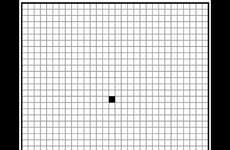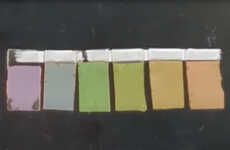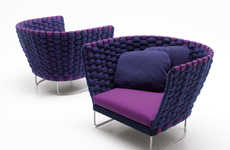
Scientists Have Developed 'Vantablack,' the Blackest Black Ever
Laura McQuarrie — July 17, 2014 — Tech
References: surreynanosystems & mtv
If you're someone who absolutely can't get enough black, some good news is that the blackest black ever has been developed by the aerospace engineers of Surrey NanoSystems.
The material called 'Vantablack' can be applied to any surface and it's capable of absorbing 99.96% of light. The material was created for use by astronomical cameras and telescopes, made from carbon nanotubes, but it could have huge implications for other things like fashion too. Although it would be very expensive if applied to a dress, Surrey NanoSystems chief technical officer Ben Jensen describes that “You would lose all features of the dress. It would just be something black passing through."
As demonstrated on a crumpled sheet of foil, the material appears completely flat and there's no shadowing from the folds.
The material called 'Vantablack' can be applied to any surface and it's capable of absorbing 99.96% of light. The material was created for use by astronomical cameras and telescopes, made from carbon nanotubes, but it could have huge implications for other things like fashion too. Although it would be very expensive if applied to a dress, Surrey NanoSystems chief technical officer Ben Jensen describes that “You would lose all features of the dress. It would just be something black passing through."
As demonstrated on a crumpled sheet of foil, the material appears completely flat and there's no shadowing from the folds.
Trend Themes
1. Vantablack - The development of 'Vantablack', the blackest black ever, presents disruptive innovation opportunities in various industries.
2. Light-absorbing Materials - The advancement of light-absorbing materials like Vantablack opens up disruptive innovation opportunities in fields such as fashion, architecture, and automotive.
3. Optical Camouflage - The capabilities of Vantablack to make objects appear completely flat and without shadowing create disruptive innovation opportunities in the field of optical camouflage, offering potential applications in military, entertainment, and security industries.
Industry Implications
1. Aerospace - The development of Vantablack, a light-absorbing material, presents disruptive innovation opportunities in the aerospace industry for applications such as improving the performance of astronomical cameras and telescopes.
2. Fashion - The creation of Vantablack, capable of absorbing 99.96% of light, offers disruptive innovation opportunities in the fashion industry by exploring new design possibilities and creating unique visual effects.
3. Architecture - The advancements in light-absorbing materials like Vantablack can revolutionize the architecture industry by enabling the creation of buildings with improved energy efficiency and unique aesthetic characteristics.
3.9
Score
Popularity
Activity
Freshness























